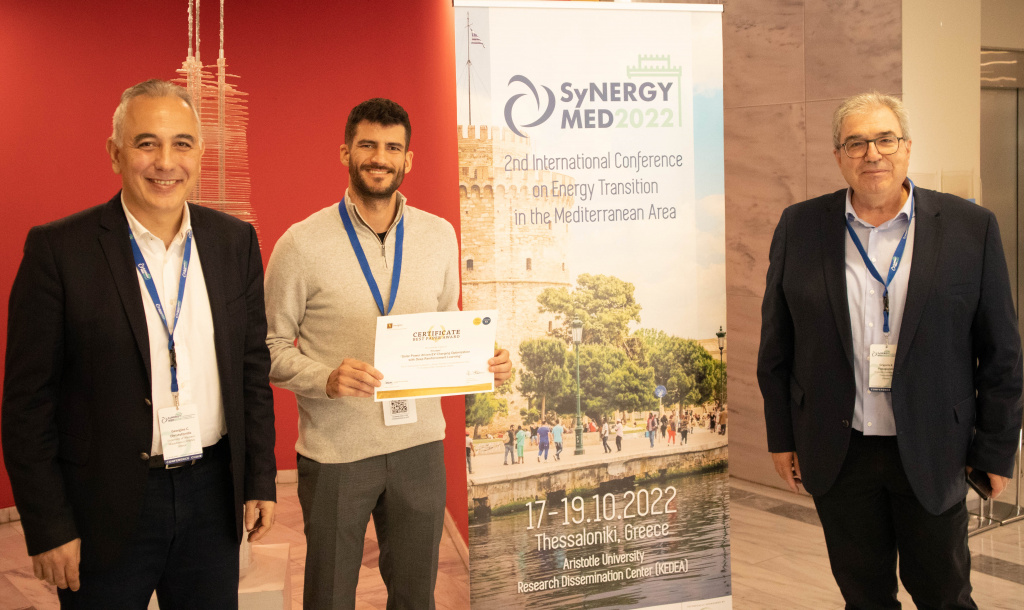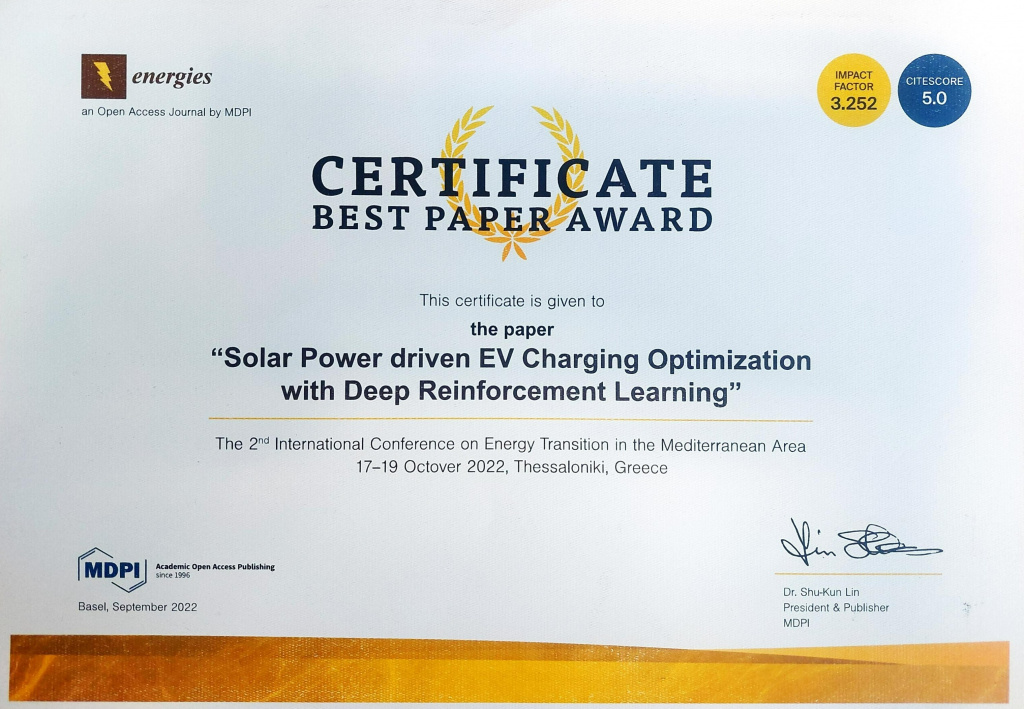NTUA Ph.D. Fellows Stavros Sykiotis and Christoforos Menos-Aikateriniadis received the Best Paper Award in the SyNERGY MED 2022


We are pleased to announce that the paper entitled “Solar Power driven EV Charging Optimization with Deep Reinforcement Learning” received the Best Paper Award in the 2nd International Conference on Energy Transition in the Mediterranean Area (SyNERGY MED) that was held on October 17-19, 2022.
The award-winning work was a joint collaboration among the Schools of Electrical and Computer Engineering and of Rural, Surveying and Geoinformatics Engineering in the National Technical University of Athens (NTUA), and Intracom S.A. Telecom Solutions (ICOM). The paper was co-authored by Stavros Sykiotis (NTUA), Christoforos Menos-Aikateriniadis (NTUA-ICOM), Anastasios Doulamis (NTUA), Nikolaos Doulamis (NTUA), and Pavlos S. Georgilakis (NTUA).
This paper has been funded by the European Union’s Horizon 2020 research and innovation project GECKO, under MSCA-ITN-2020 Innovative Training Networks programme, Grant Agreement No 955422.
Short Abstract: Power sector decarbonization plays a vital role in the upcoming energy transition towards a more sustainable future. Decentralized energy resources, such as Electric Vehicles (EV) and solar photovoltaic systems (PV), are continuously integrated in residential power systems, increasing the risk of bottlenecks in power distribution networks. This paper aims to address the challenge of domestic EV charging while prioritizing clean, solar energy consumption. Real Time-of-Use tariffs are treated as a price-based Demand Response (DR) mechanism that can incentivize end-users to optimally shift EV charging load in hours of high solar PV generation with the use of Deep Reinforcement Learning (DRL). Historical measurements from the Pecan Street dataset are analyzed to shape a flexibility potential reward to describe end-user charging preferences. Experimental results show that the proposed DQN EV optimal charging policy is able to reduce daily electricity bills by up to 11.5% by achieving an average utilization of solar power 88.4%.
